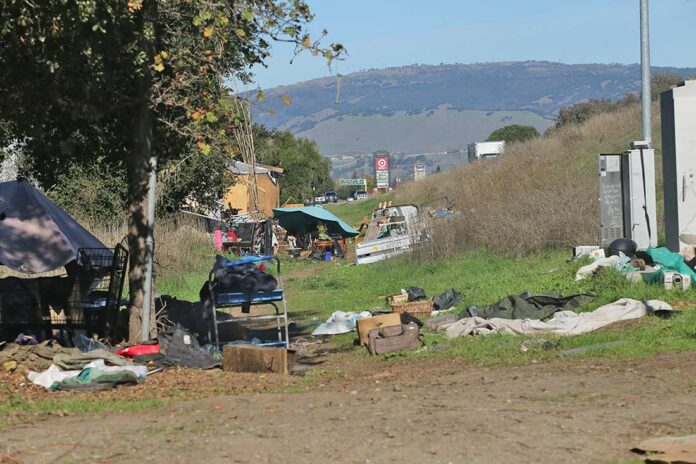For people on the verge of homelessness, emergency financial assistance offers great promise, according to a randomized control study done in Santa Clara County.
Randomized control studies are typically used in medical research to establish a cause-and-effect relationship between a medical treatment and a health outcome.
But recently, economists have been using them, when possible, to test the effectiveness of policies and interventions like emergency financial assistance which many worried didn’t work to prevent homelessness.
“There really was not a rigorous response to that concern,” said James Sullivan, University of Notre Dame professor of economics and co-founder of the Wilson Sheehan Lab for Economic Opportunities, which aims to help the most vulnerable with its work. “This really addresses that concern head on.”
Sullivan said evidence shows it’s worth expanding funding for these programs. This is the first evidence of a cause-and-effect relationship between emergency financial assistance and reductions in homelessness.
According to the study, which was published earlier this year in The Review of Economics and Statistics, communities get $2.47 in benefits for every dollar they spend on emergency financial assistance.
Results also show that within the first six months after receiving the assistance, individuals and families were 81% less likely to be homeless and after 12 months, they were 73% less likely.
Participants in the study received financial assistance through the Santa Clara County Homelessness Prevention System, which is co-led by Destination: Home, a group working to end homelessness in Silicon Valley.
The study was an independent evaluation of the work that Destination: Home has been doing, Destination: Home CEO Jennifer Loving said in an interview July 21.
Emergency financial assistance is far more humane and a lower-cost strategy than helping someone recover from homelessness, Loving said.
The effects of the study may be far-reaching. This year for the first time the federal government will invest in prevention, Loving said. She thinks it’s way past time.
Local and state governments could follow in the U.S.’s wake.
Loving could not say how much more money Destination: Home will be putting toward prevention because discussions around the new budget are occurring now. But it will be an increase, she said.
Participants in the study were facing imminent eviction or homelessness and were given financial assistance between July 2019 and December 2020. The average household received nearly $2,000.
The assistance helped individuals and families pay for rent, utilities and other housing-related expenses.
Sullivan said policymakers are struggling to decide how to allocate resources to end homelessness, and this research shows that service providers can target interventions to people in need, “which moves the needle on homelessness enough to justify making the investment.”
Lead author David Phillips said prevention is not a panacea for issues like health and substance abuse, which are often associated with “the most visible forms homelessness.” But prevention is effective, he said.
Ky Le, Santa Clara County’s deputy county executive, said the county has three goals following the completion of the study.
One, the county wants to make homelessness prevention services an ongoing part of its supportive housing system.
Two, the county wants to expand the capacity of its homelessness prevention services; and three, it wants to tailor its homelessness prevention services to other vulnerable people such as those with chronic health conditions.
Le thinks that prevention will make a significant difference. Five to six years ago when the study began, two to three people were entering homelessness for every person who entered housing, and prevention could swing the pendulum in the other direction.
Copyright © 2023 Bay City News, Inc.








